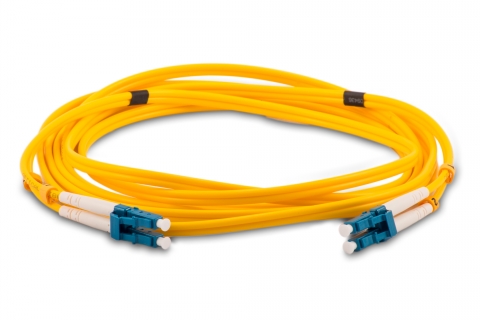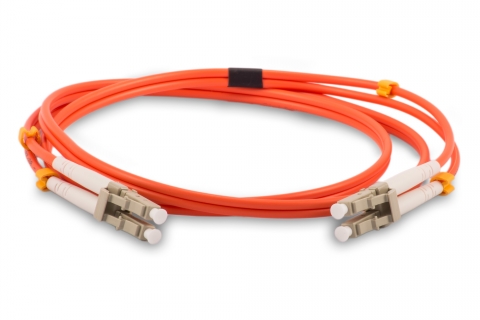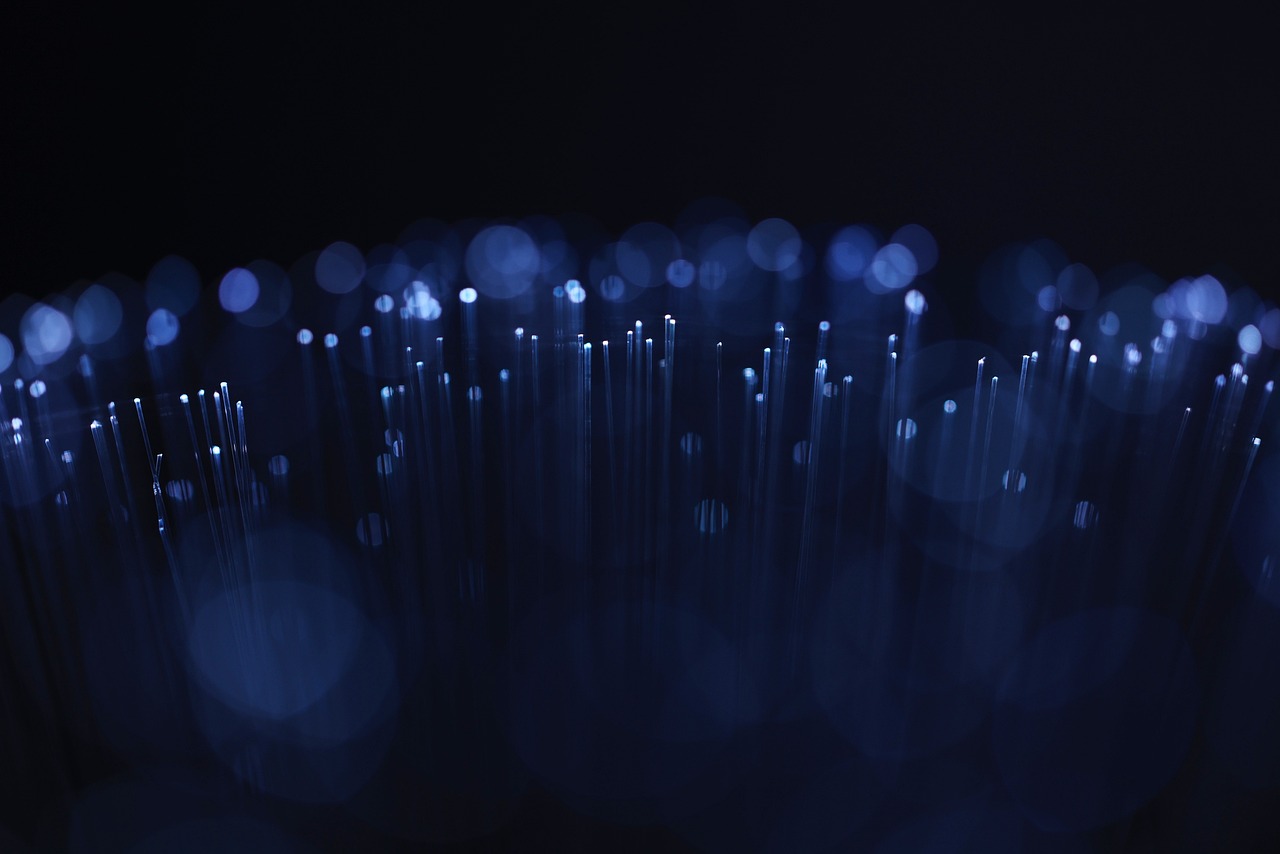Shop Cables for Sale - Fiber Optic Cables, Network Cables, Outdoor Cables, Bulk Ethernet Cables, Cat6 Cables, Cat5 Cables, Cat5e Cables, Crypto Cables and Data Center Cables.
Why Invest in Fiber Optic Cable?
Fiber Optic Cables for Speed and Convenience at Cables.com.
Fiber optic cables, or optical fiber, work by transmitting data through pulses of light that travel through glass filaments at the speed of light.
by Vikas Dayal • October 04, 2024
Fiber optic cables, or optical fiber, work by transmitting data through pulses of light that travel through glass filaments at the speed of light. Fiber optic cable is much faster than the fastest copper network cables, making it the fastest option for data networks.
What Are Fiber Optic Cables?
Fiber optic networks are considered the cutting connection edge today. The "fiber" in fiber optic refers to the many superfine glass filaments contained within the cable jacket, whereas other types of cable would typically contain traditional copper instead. These hair-fine glass filaments transmit data through pulses of light that travel at the speed of - you guessed it - light. As a result, your fiber connection is far less likely to get distorted over long distances like connections reliant on copper cables might be. You can expect fiber optic internet to run much more quickly than an ethernet network - under ideal conditions, that might mean even more than 100x faster. This translates to an incredible 100Gbps, or 100 gigabits per second in comparison to a high-end ethernet connection speed of only 10Gbps.
Why Choose Fiber Optic Cables?
There are numerous reasons why it might be worthwhile for you to invest in optical fiber network cables rather than ethernet. Speed and bandwidth are key, with fiber optic connections blowing traditional copper ethernet cables out of the water on both fronts. But there are more reasons that fiber optic stands apart. Durability is one, due to the fact that fiber cables are much more durable and less prone to damage than copper cables.
There's also the matter of sustainability - fiber optic cables are more energy efficient than copper-based networks, which can help reduce carbon emissions. Fiber optic cables are built to last for decades, requiring minimal maintenance and upgrades. Updating equipment can be time-consuming and costly. Fiber optic internet is easy to install new equipment on and can be scaled for growing businesses.
So though fiber optic internet is more expensive than an ethernet connection at the outset, the fiber optic cables increasingly used in telecom, internet service provider, and enterprise data center networks don't require the same overhead as copper networks, making them a smarter investment overall.
What Kinds of Fiber Optic Cable Are There?
There are two different types of fiber optic cords - multi mode fiber, and single mode fiber. Which fiber optic network patch cable is the right fit for your data network? Let's check out the pros and cons of each to determine which one might be the right cable for you.
Single Mode Fiber Optic Cables
It's easy to believe that more = better. For that reason, you might think that it's better to go with multi mode fiber optic cables rather than single mode. But believe it or not, single mode fiber's single transmission mode is capable of carrying higher bandwidth. When it comes to transmission distance, single mode emerges the victor by a long shot - its single glass fiber strand transmit 1 to 10 gigs of data and 1080p resolution up to twice as far as OM1, OM2, OM3, or OM4 fiber optic cables. Though a single mode cable's fiber core is significantly smaller than a multi mode cable core, it packs a real punch.

Singlemode LC to LC 9/125 Micron fiber optic cables are built to ensure that your network functions reliably. These cables contain ceramic ferrules designed for optimal data transfer and include the highest quality corning glass available, meeting industry standard loss in Insertion and Return, in lengths from 1 meter to 20 meters. You can find these fiber optic cables here at Cables.com for the lowest prices online, delivered with the best service you'll find from any other retailers.
Multi Mode Fiber
Multi mode fiber optic cables usually feature a standard aqua blue jacket, which might make them hard to distinguish from each other. Datacomm manufactures both our OM3 and OM4 cables in the US, and they're assembled using high-quality materials for optimum performance. But there are different types of multi mode fiber cables!

Our standard OM1 fiber optic cables cables are made up of a 62.5u micron Multimode riser-rated orange jacket and LC UPC polished connectors on either end. These optical fiber cables have been machine tested before making their way to you, and you'll find the results in the bag as evidence of their reliability. Whether you're purchasing our commonly-used LC to LC OM1 fiber optic cable or an SC to ST OM1 62.5u/125 Micron fiber cable, you can be confident that your cable will get the job done.
Shop Fiber Optic Cable at Cables.com
Whether you're looking for multi mode or single mode fiber cable, Cables.com has quality cables available at some of the best prices on the market. You can buy your fiber optic cable in bulk, and you have the option of purchasing custom fiber optic cable in the colors and configurations you need. Still have questions? We have answers, and we'd love to hear from you! Contact us today to discuss your order. We look forward to working with you!
SHOP NOW: OM3 Multimode Fiber Optic Cables - OS2 Singlemode Fiber Optic Patch Cables - Custom Color Fiber Optic Cables - Fiber Optic Cable Connectors











